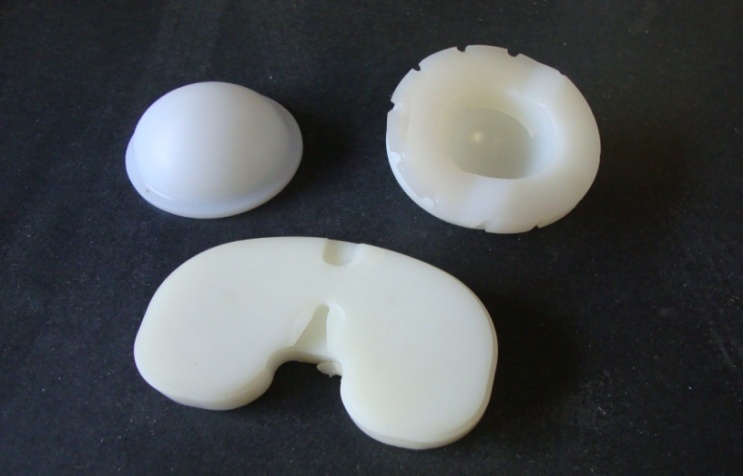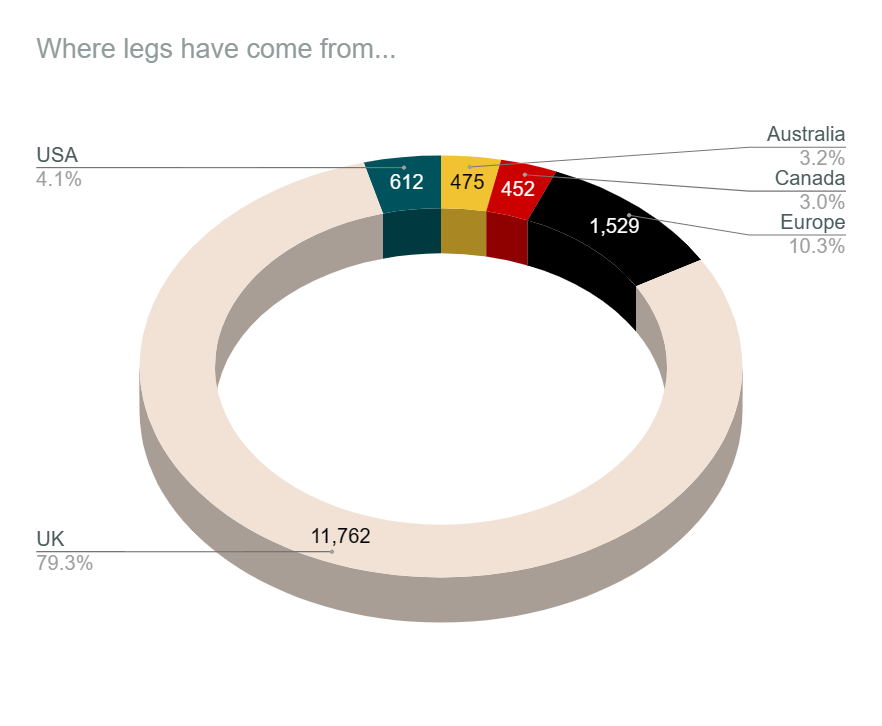Following both prosthetic workshops and after hearing about the ZeroThirty initiative hoping to see the NHS carbon neutral by 2030, I began to wonder whether the conventional plastic used in prosthetic components could be sustainably sourced or even recycled. Being someone who is passionate about developing a greener future and currently conducting a research project in sustainable land management, this led me to wonder whether environmentally friendly prosthetic limbs already exist via the creation of new prosthetics re-using wasted materials or recycling those that no longer serve their owner purpose.
By prolonging the working lifespan of such a persistent material, could this reduce the unnecessary contribution of yet another source of plastic to the growing waste accumulation and help keep the NHS on track towards its target?
Recycled Plastic Prosthetics:

While you wouldn’t expect false limbs to make up a large portion of landfills, the materials used to make prosthetic sockets and implant components, include high density molecular weight polyethylene (UHMWPE) and other thermoplastic polyethylene. UHMWPE has a very high strength to density ratio needed to withstand large amounts of stress while being relatively lightweight compared to titanium or ceramic materials that have also been used. One key feature of UHMWPE is its longer chain structure which is able to resist heavy loads more effectively resulting in being a high impact strength. However, thermoplastics do not biodegrade and will therefore persist in the environment.

This only becomes an issue when prosthetics are no longer required by a person, due to outgrowing replacements, gaining upgrades or eventual death. In 2019, researchers from De Montfort University (DMU), developed a recycled prosthetic limb by pulverizing plastic bottles and spinning them into polyester yarns that were moulded upon heating. Dr Kandan stated that, “Upcycling of recycled plastics and offering affordable prosthesis are two major global issues that we need to tackle.” Not only is this solution more cost-effective, but it is also more durable. The DMU team claimed that price per socket could be reduced from £5000 to only £10.

In 2015, the World Health Organisation estimated there were 40 million amputees in the developing world with only 5% having access to prosthetic care. Due to the staggering cost reduction, the largest beneficiaries of the recycled prosthetic limb are presumed to be amputees in developing counties, bringing a more financially accessible option to areas with limited resources and narrowing the inequality treatment gap. Although, there is little long-term evidence that this creation performs the same quality of function as modern prosthetics, so it is difficult to assess long-term benefits (or possible disadvantages) of using a prosthetic limb that is so different from all that came before it. Another issue is the weakened chemical structure of the plastics and questionable longevity once in use again. Are these unknown risks going to do more damage? Only time will tell …
Re-using prosthetics:
After further research into solutions to tackle the barriers of cost, supply and demand of prosthetics for amputees in developing countries, I discovered the Legs4Africa charity which does exactly that. Relying on public donations, recycled prosthetic legs are shipped worldwide to Africa. Since 2014, over 12,000 prosthetic legs have been collected, allowing amputees to return to work and regain a higher quality of life.

The short video below demonstrates the incredible work Legs4Africa has achieved making a huge difference to the lives of so many.
Final thoughts:
Though both aspects explored in this blog are small contributions, they are headed in the right direction. Extending the life of prosthetics to fulfil pressures of demand and repurpose existing materials to limit consumption and waste generation could become revolutionary. There is a long way to go, and I believe that with a scrupulous trial of performance, recycled prosthetics could really take off. This topic is so important and I find it fascinating that large prosthetic manufacturers have not yet made the link between sustainable regeneration of plastics in prosthetics. What does this suggest about its reality?
A really interesting blog post on a very important topic. There is a good use of images and multimedia to demonstrate your well-researched points. A useful way of comparing sustainability is through life cycle assessment (LCA) as it is more quantitative. I don’t know if the data is available for these but it is worth looking into. It would be god to bring a more personal voice throughout the article. What exactly about this technology excites you? What are your opinions? Do you think the 2030 NHS target is achievable? Reducing sentence length in some cases would also improve readability.